UnBQ First Floor
The 1st Floor of University nuhelot’įne thaiyots’į nistameyimâkanak Blue Quills (UnBQ). Important areas include four large classrooms and the chapel. Click on the triangle to load the point cloud. Labels on the point cloud indicate past room functions.

“It has always been clear to me that the Indians must have some sort of recreation, and if our agents would endeavour to substitute reasonable amusements for this senseless drumming and dancing, it would be a great assistance.” – Duncan Campbell Scott, Deputy Superintendent of Indian Affairs, 1921
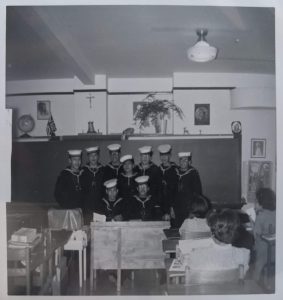
The first floor of UnBQ is currently used for administrative and operational functions of the university. Many of the smaller rooms on this floor are used as offices for current staff, including the main office for the university. The west side of this floor features two classrooms with an office in between. The east side also has two classrooms but with access to the fitness center on the second floor of the gymnasium. Along the main hallway of this floor are mostly staff offices, bathrooms, and storage rooms. The university library is located at the north end of the center wing. The library has an upper level which was added to the north end of the building to increase shelving space. The addition also connects this wing via an interior stairwell downstairs to the boiler room on the basement.
When Blue Quills operated as a residential school, there were still two pairs of classrooms on either side of the floor. Grades 1,2 and 3,4 shared the classes on the west side of the school, and grades 5,6 and 7,8 were on the east. School work was often challenging for students, who usually arrived at the school not knowing English. Verna Daly remembers that she “was ahead of some of my classmates because [she] knew how to write, this and that, and [she] had learned English at the Charles Camsell Hospital” before arriving at Blue Quills at the age of five. Margaret Cardinal recalls being physically punished by teachers in her for not being able to read English well in her grade three class.
The current library originally functioned as the school chapel. The chapel could be accessed directly via a corridor leading from the front entrance, so community members could attend services without having to walk through the school. As with students, women and men were separated on either side of the chapel; the girls’ to the west and the boys’ to the east. The rooms located directly to the left and right of the entrance were visiting rooms for students and staff who lived on site. Positioning them near the entrance meant that visitors were not required to walk through the rest of the building. Sherri Chisan, President of UnBQ, shared that the visiting room for staff had comfortable padded, seating, and was richly decorated. Across the hallway, the room where students met with family members was largely bare with plain benches.
Notes:
This page is pending approval from UnBQ IRS Advisory group.
Left click and drag your mouse around the screen to view different areas of each room. If you have a touch screen, simply drag your finger across the screen. Your keyboard's arrow keys can also be used. Travel to different areas of the third floor by clicking on the floating arrows.
This image gallery includes modern and archival photos of UnBQ's first (main) floor.


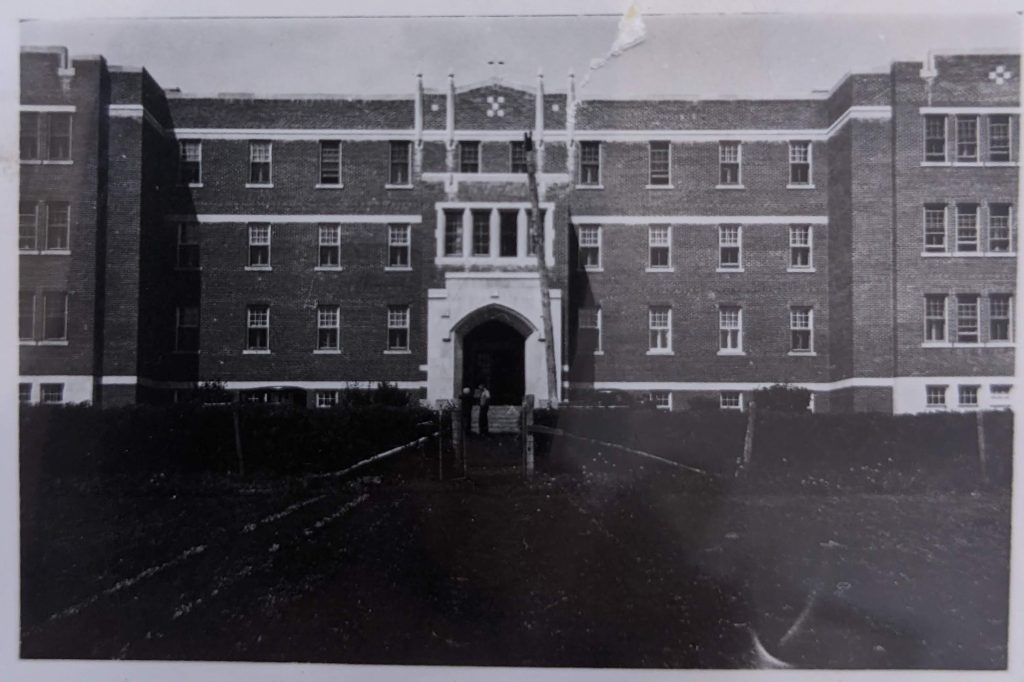
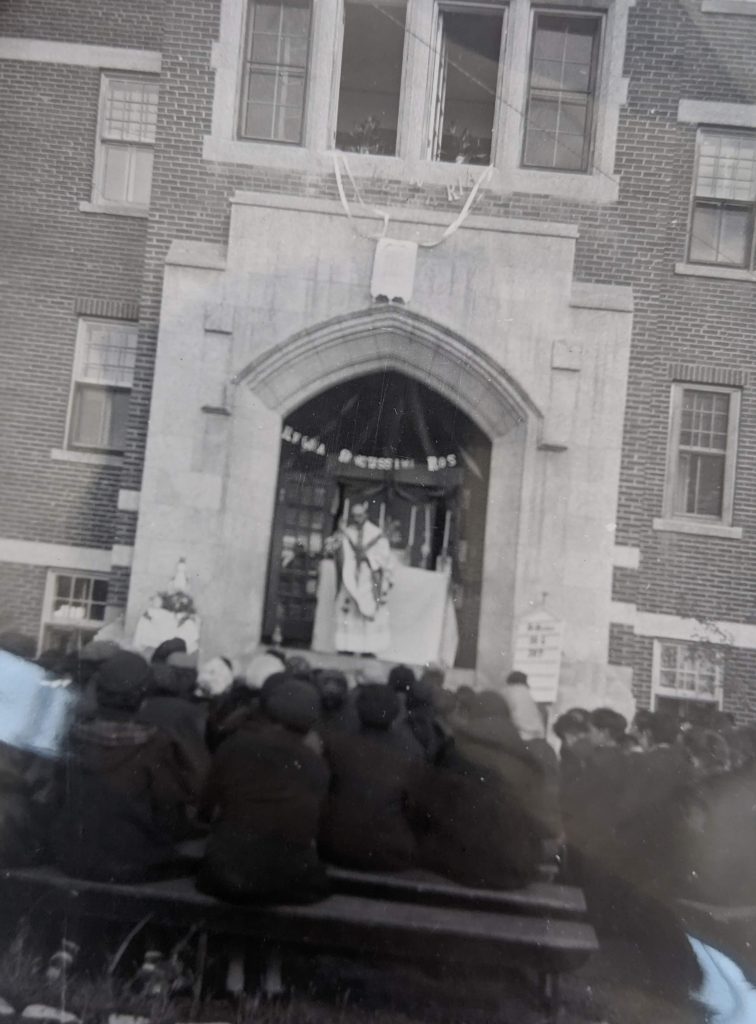
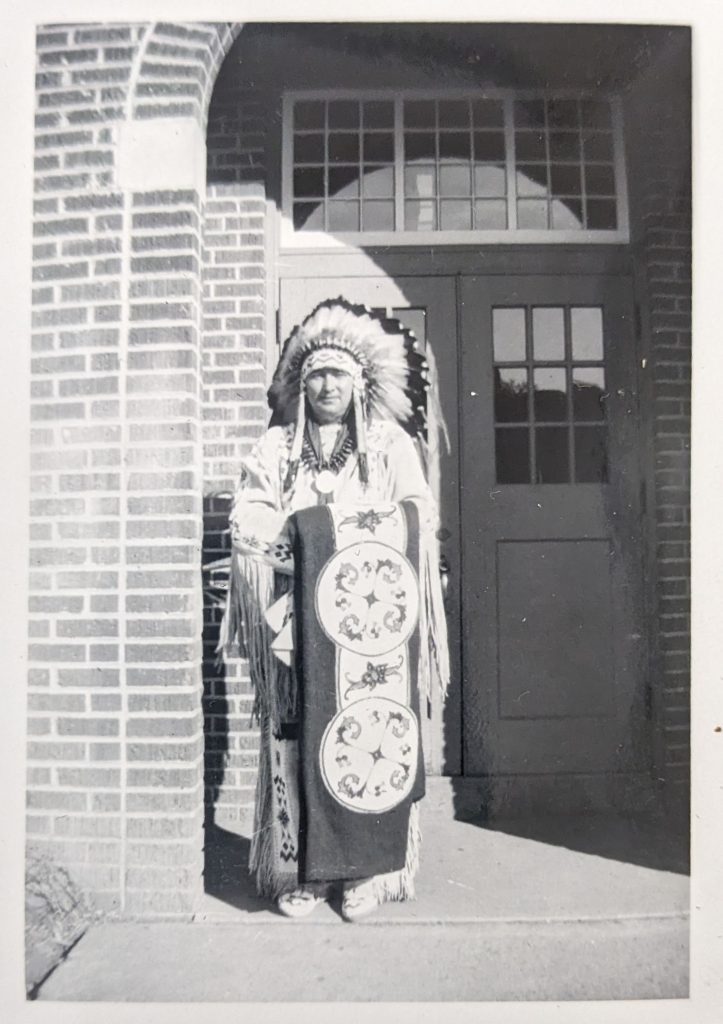
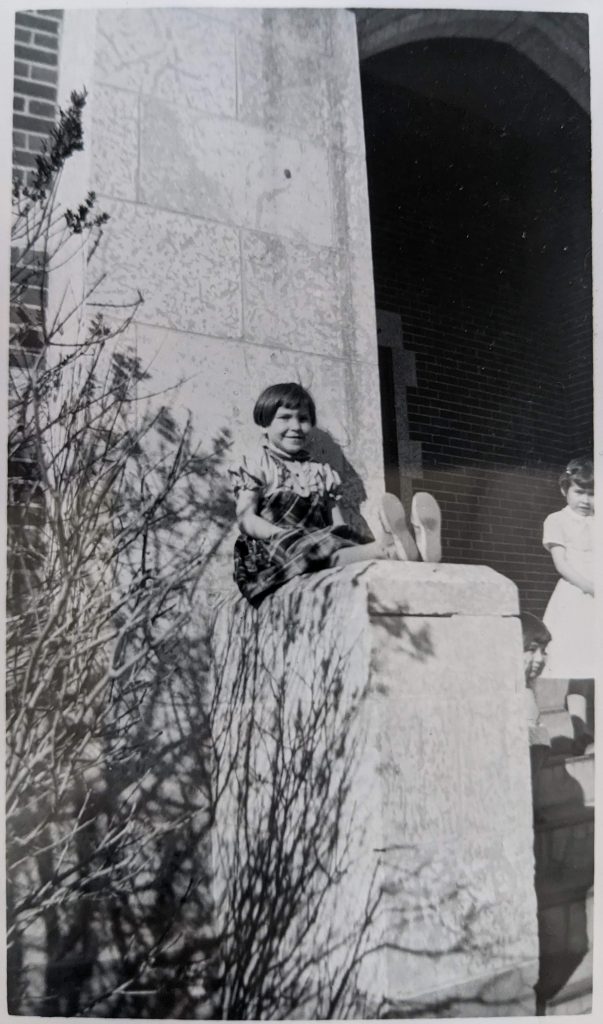
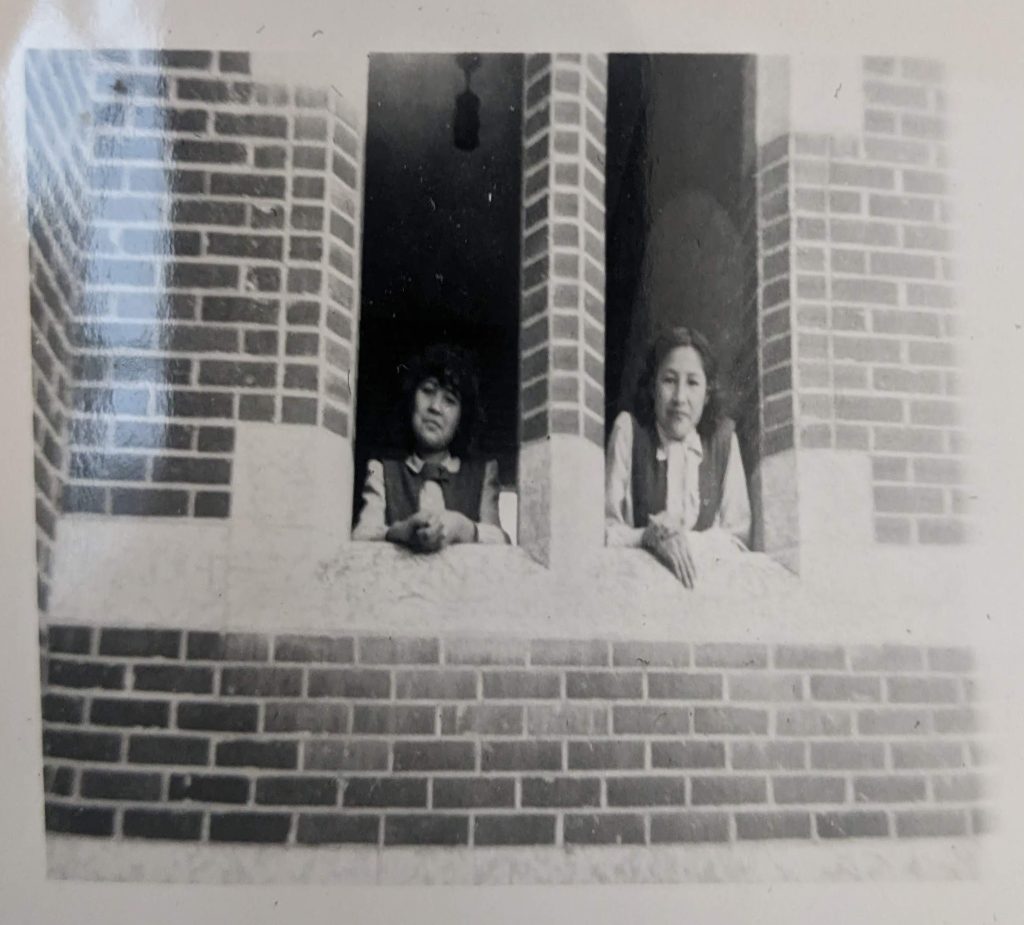
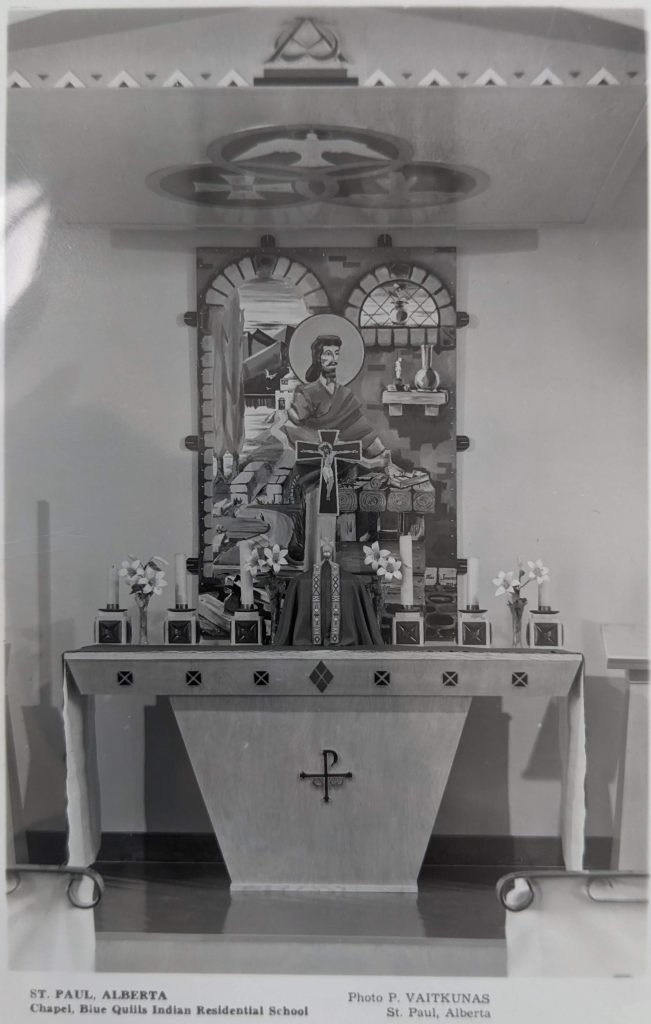
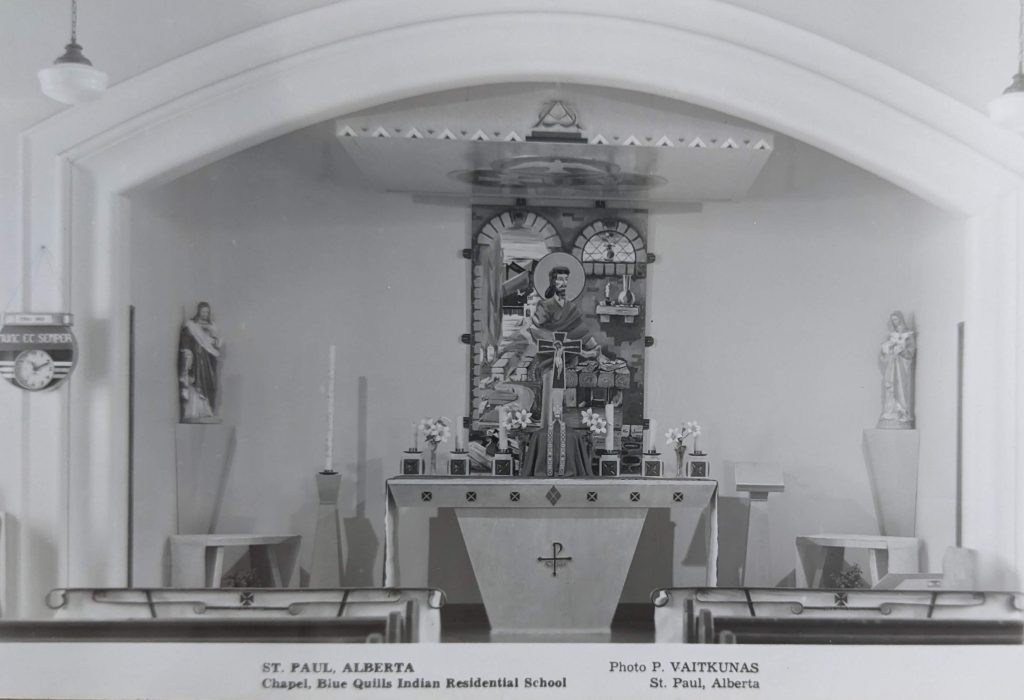
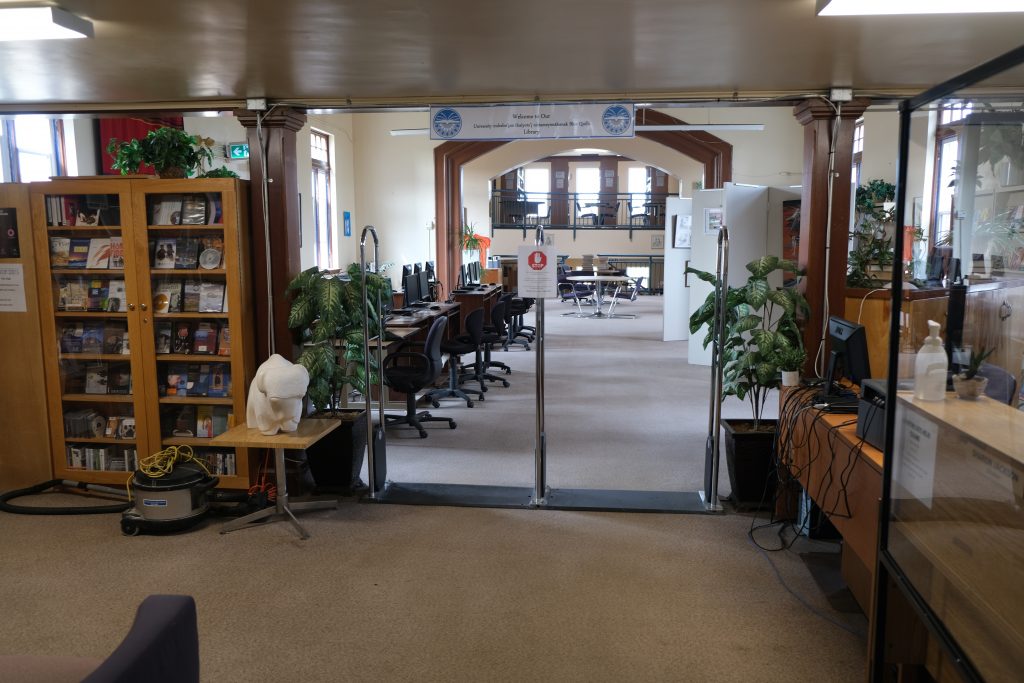
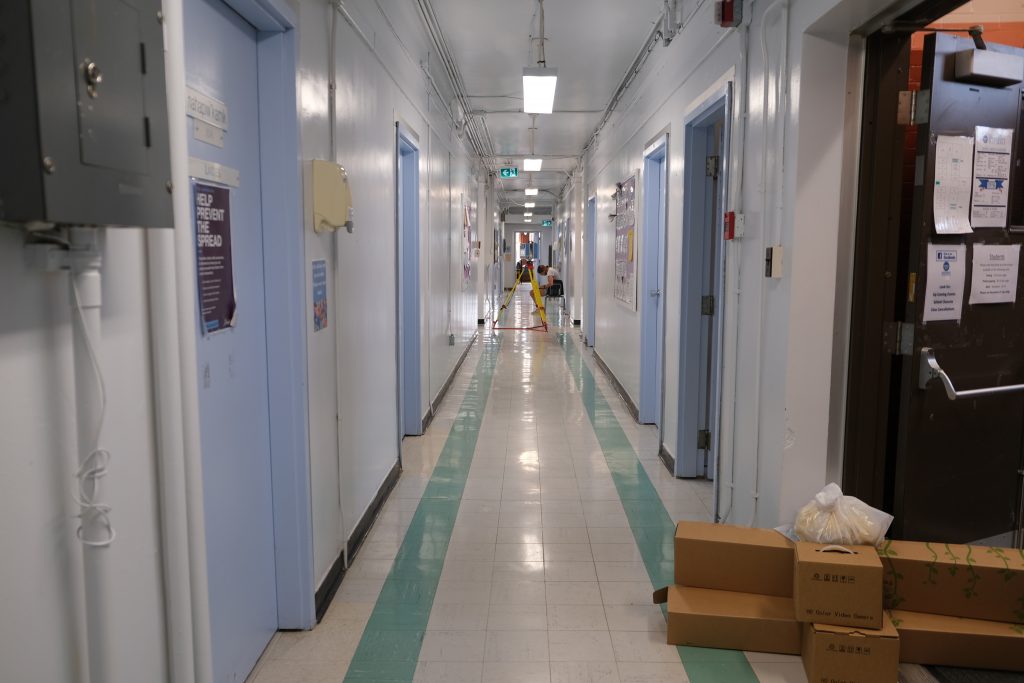
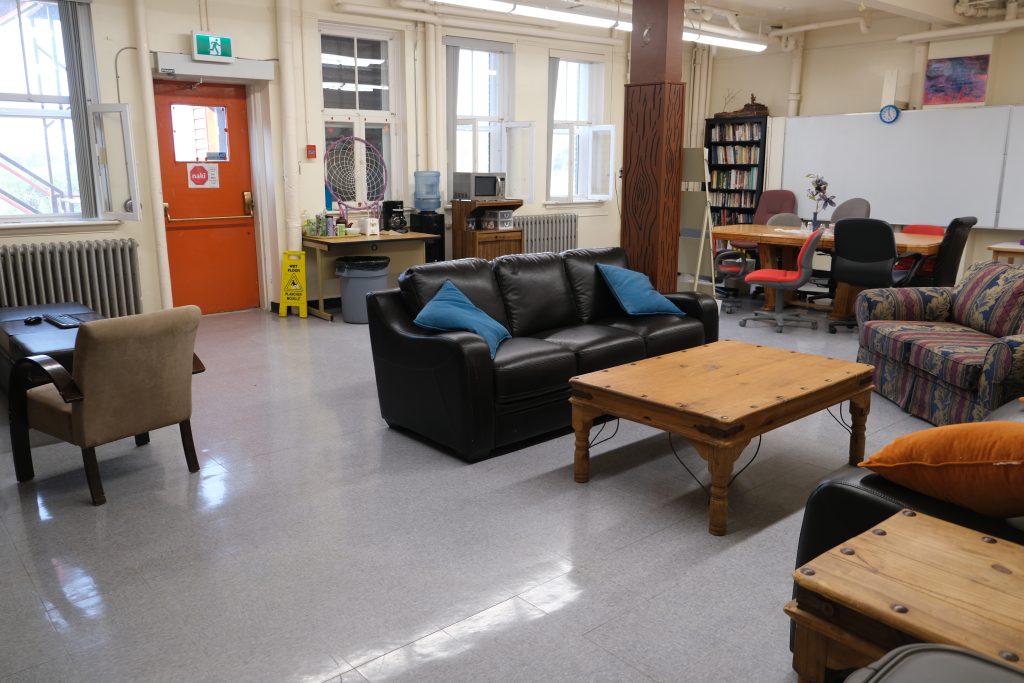
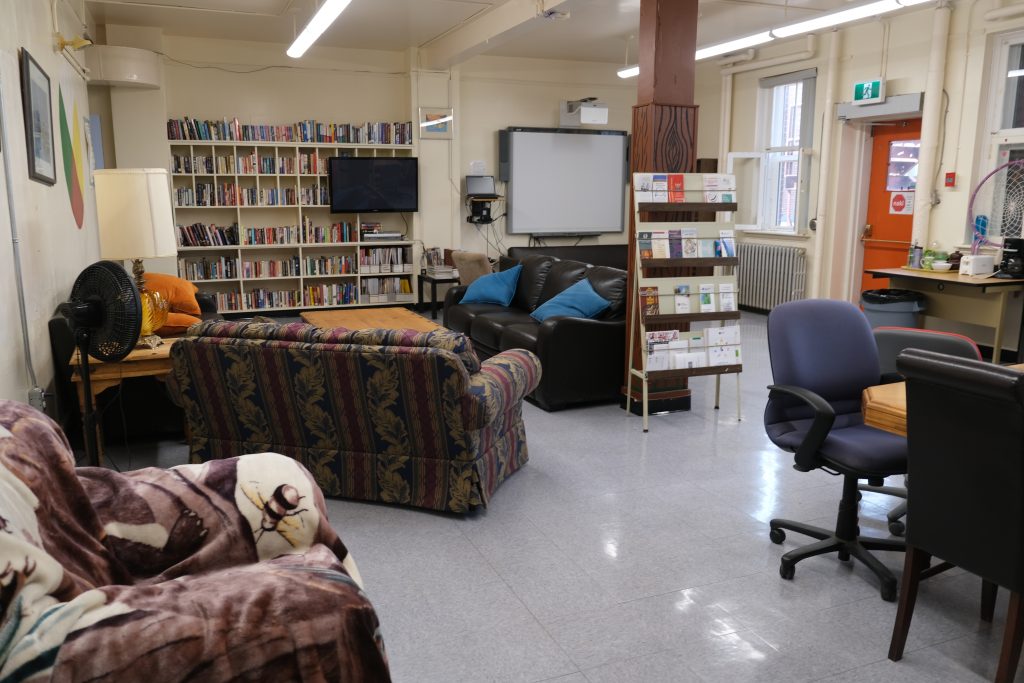

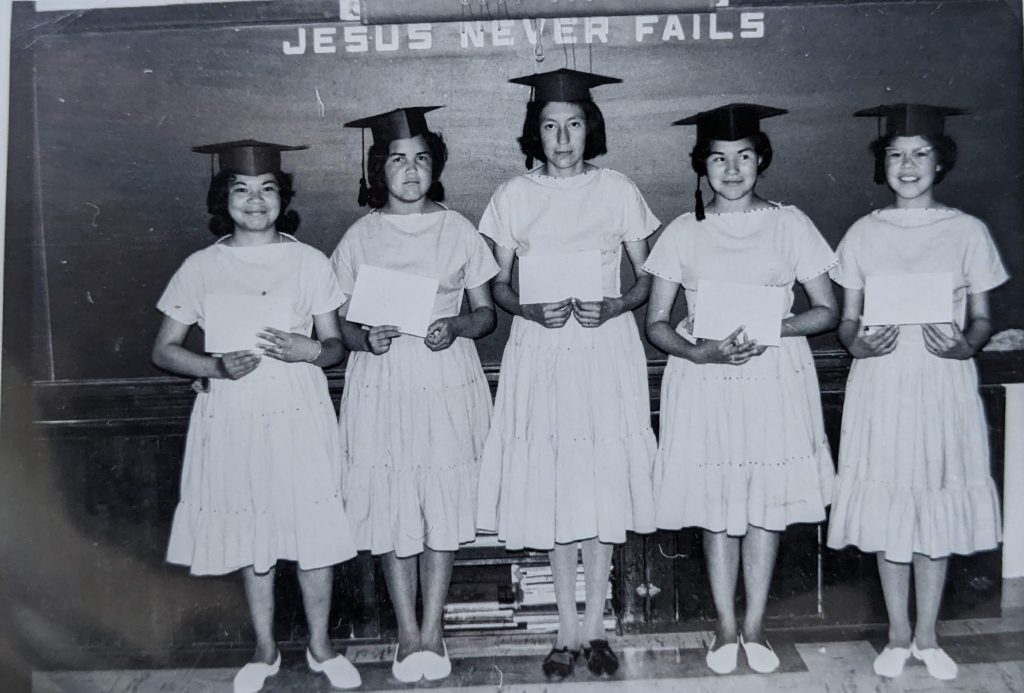
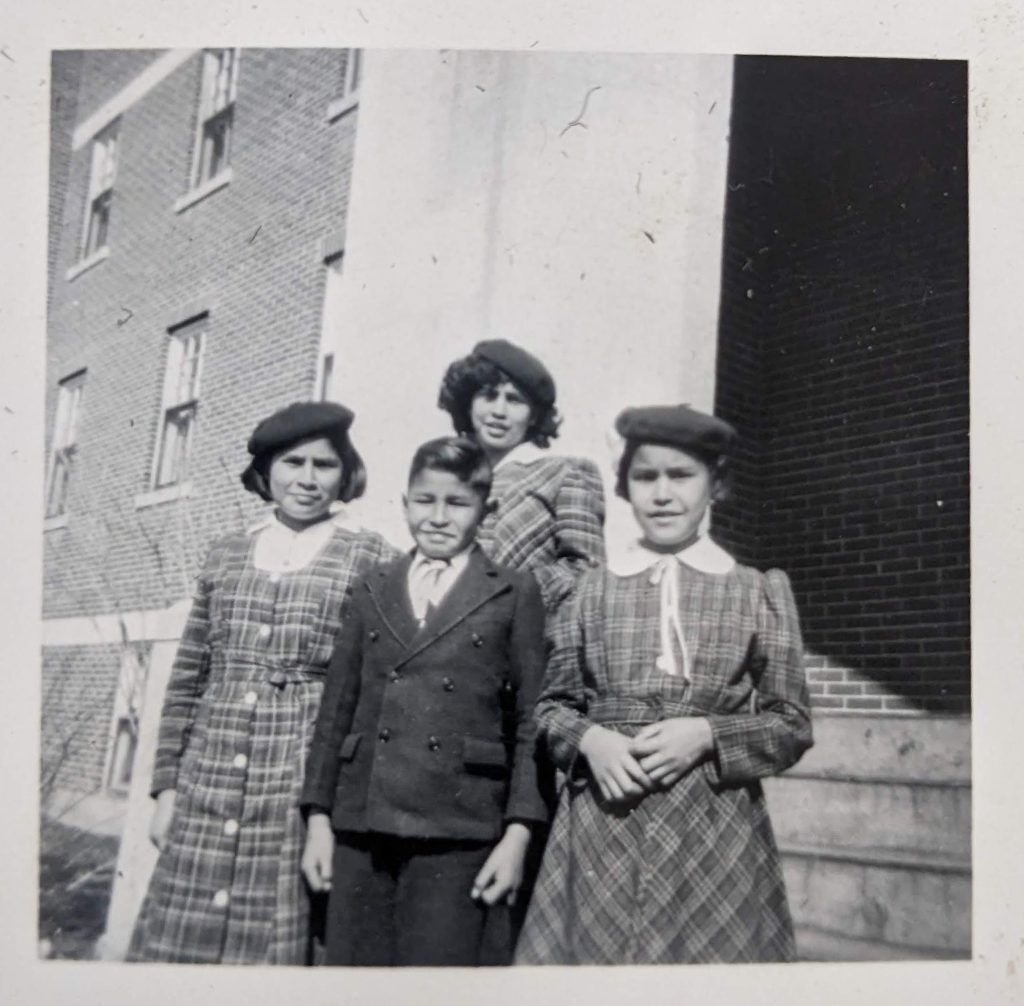
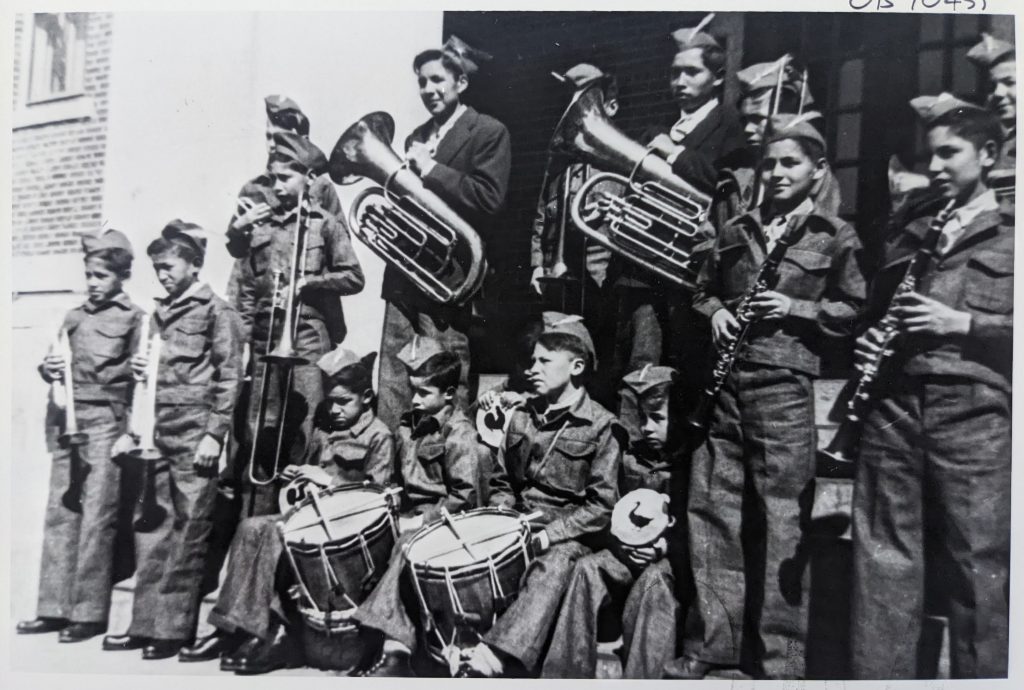
Laser scanning data can be used to create “as built” architectural plans which can support repair and restoration work to Old Sun Community College. This plan was created using Autodesk Revit and forms part of a larger building information model (BIM) of the school. The Revit drawings and laser scanning data for this school are securely archived with access controlled by the Old Sun Advisory Committee.
Some of the threats faced by Indigenous students attending residential schools came from the buildings themselves. The architectural plans contained in this archive, which have been constructed using the laser scanning data, illustrate how poorly these schools were designed from a safety perspective. There were three specific areas that placed the health and safety of students at great risk: Fire Hazards and Protection Measures; Water Quality, and Sanitation and Hygiene. As you explore the archive, you will find more information about the nature of these hazards and their impact on students.
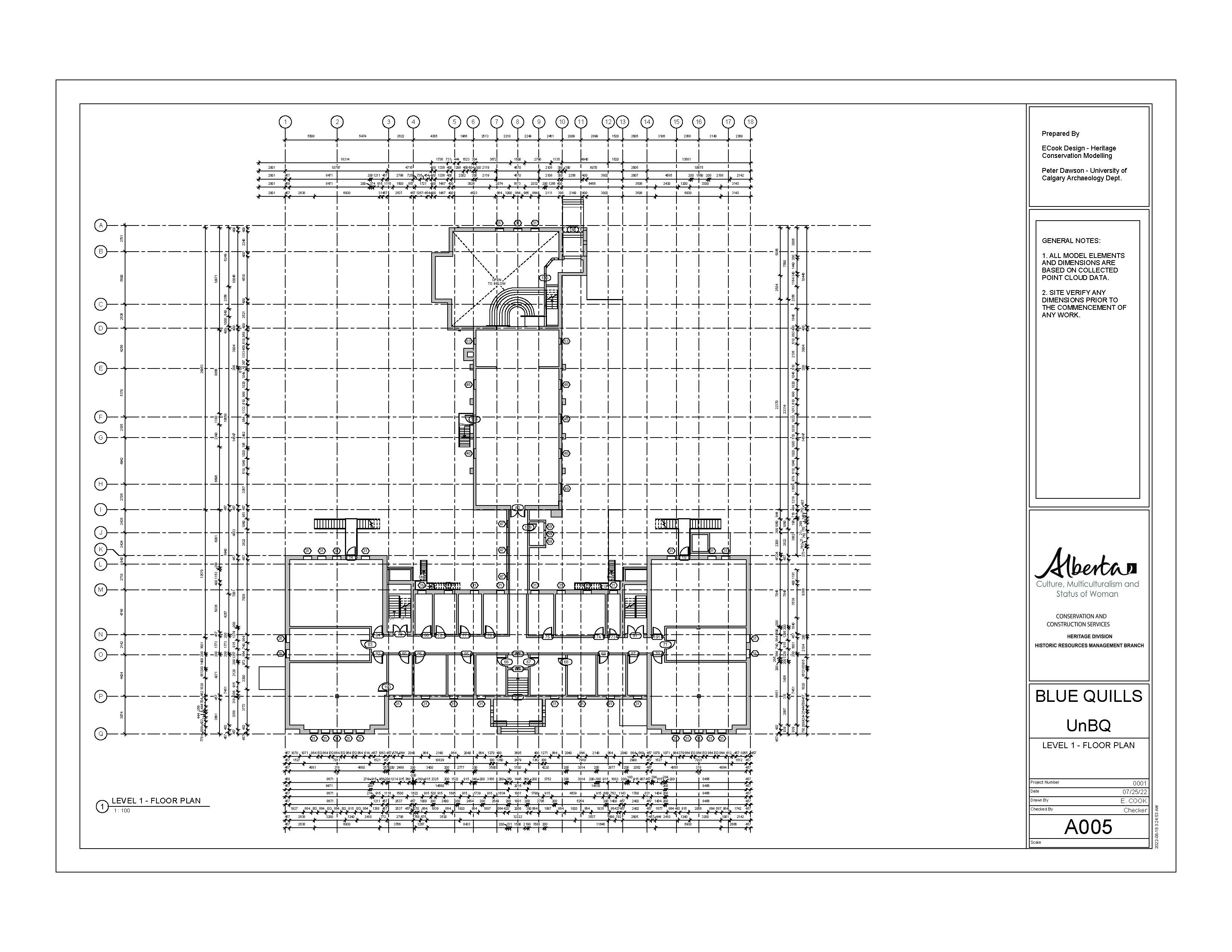
Verna Daly- They’ll Just Blame Me
I was sent away to go to Blue Quills school, and I was just a little kid, five years old. So, I had to go stay in the school and I was ahead of some of my classmates because I knew how to write, this and that, and I had learned English at the Charles Camsell Hospital.
I was glad that my older sister, one of my older sisters was there with me, in the little girls room, and she said to me, “Don’t cry. Don’t talk our language.” I told her, “I don’t know my language, How would I know how to talk?”
She said, “You know, Dene, “he said, “don’t talk that language, you’ll get strapped, or you’ll get your mouth washed out with soap.”
So, I had to learn how to get along with other kids too, some of them, I was sexually abused by one of them. There’s no use telling the supervisors, they won’t do anything about it, they’ll just blame me, so, I’ve never said anything to anybody.
Never did, till I had to go for a hearing on this residential school. Also, when I went to the hearing on my residential school, I told them about the sexual abuse and they said, “you weren’t sexually abused by the supervisors, so that doesn’t count.”
To me, it does because they, they [with emphasis] were the supervisors, they’re [with emphasis] supposed to watch us! But why did they care anyways?
I don’t think I was treated good, when I went to this hearing it sounded like it was my fault, everything was my fault… I… But it takes lots of guts to get up here and talk about this.
It really hurts.
– Verna Daly
Notes:
Verna Daly Testimony. SP117_part11. Shared at Red Deer Hearing SP117-Sharing Panel. June 7, 2013. National Centre for Truth and Reconciliation holds copyright. https://archives.nctr.ca/SP117_part11
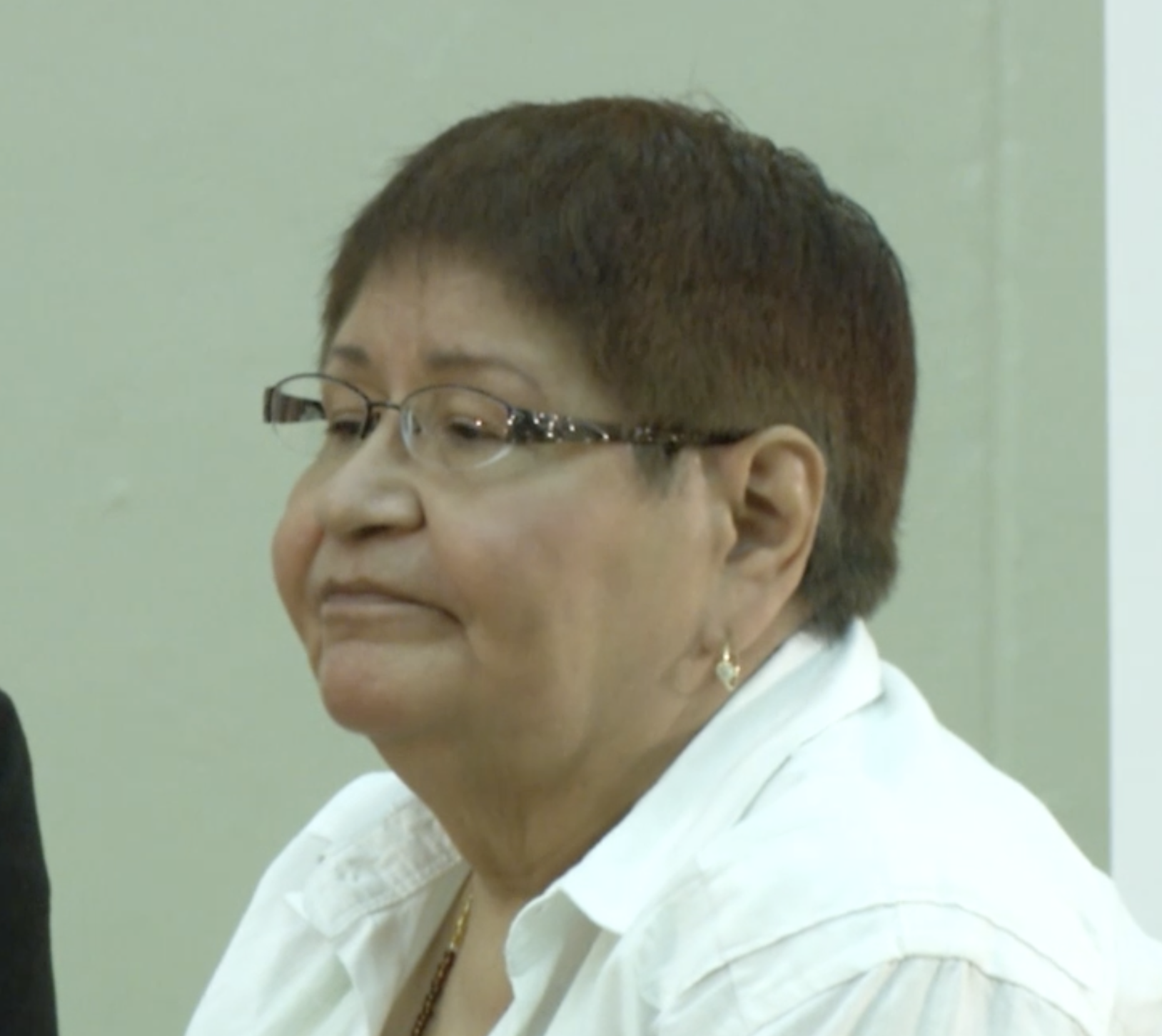
Explore Floors and Rooms
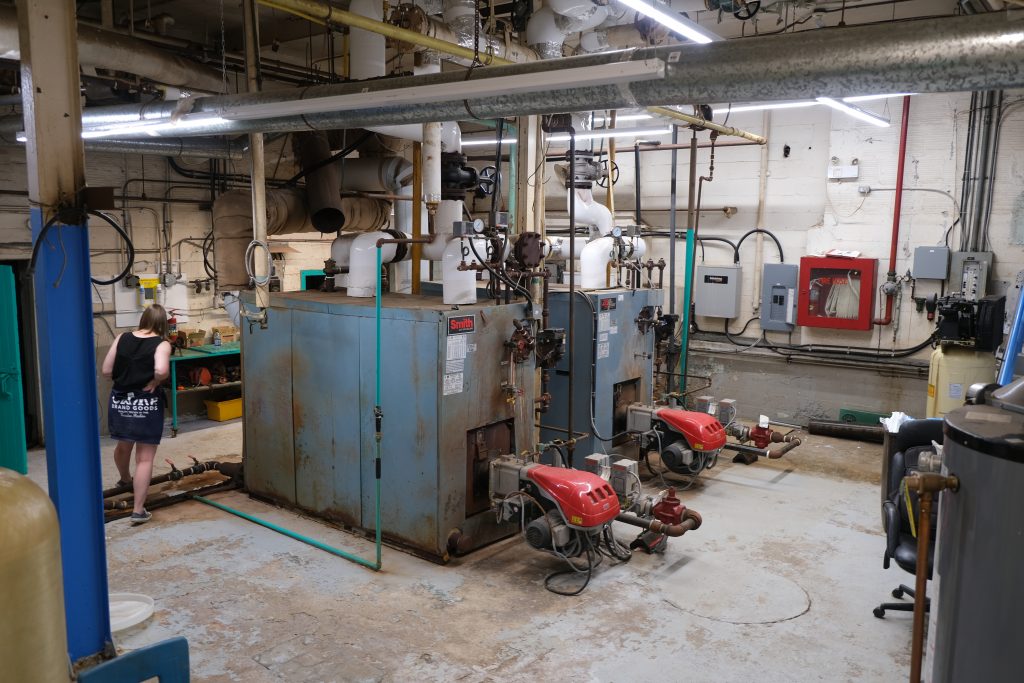
UnBQ Boiler Room
The boiler room and former coal shoot at Universit…
Read more
UnBQ Library
The Library at University nuhelot’įne thaiyots’į n…
Read more
UnBQ Third Floor/Dormitories
The 3rd Floor of University nuhelot’įne thaiyots’į…
Read more
UnBQ Second Floor
The 2nd Floor of University nuhelot’įne thaiyots’į…
Read more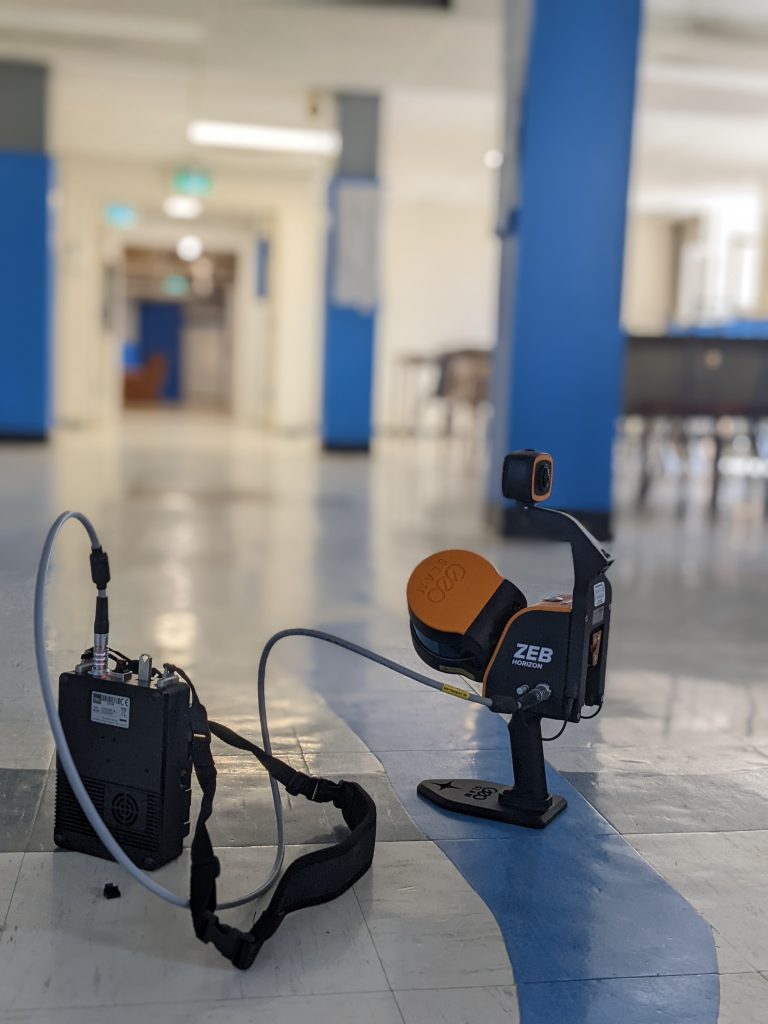
UnBQ Basement
The basement of University nuhelot’įne thaiyots’į…
Read more
University nuhelot’įne thaiyots’į nistameyimâkanak Blue Quills
The University nuhelot’įne thaiyots’į nistameyimâk…
Read more